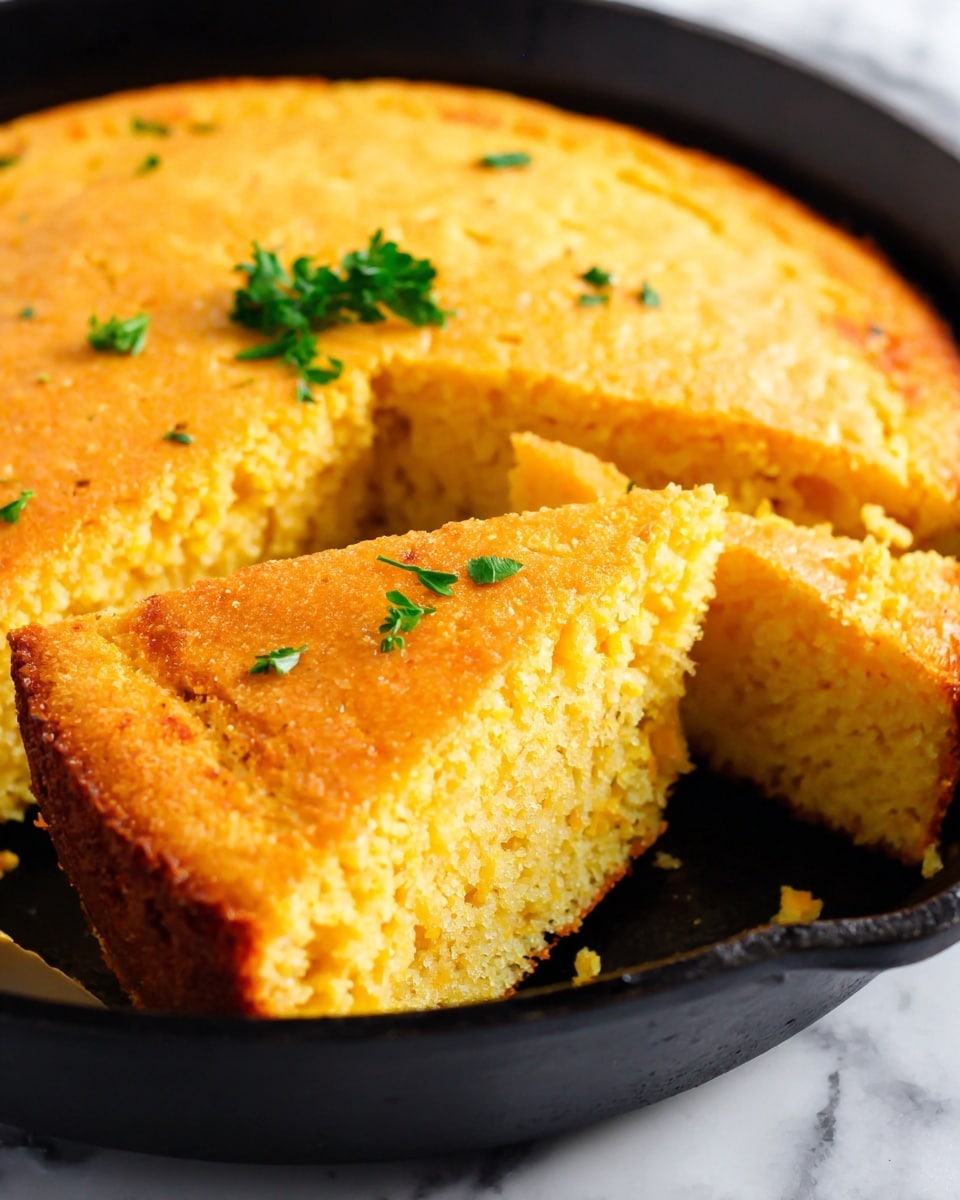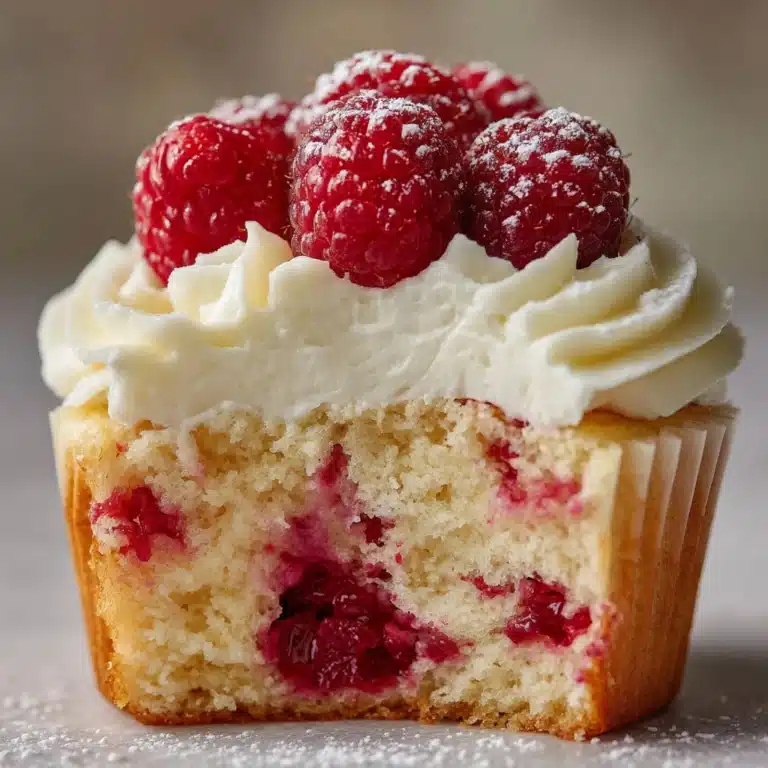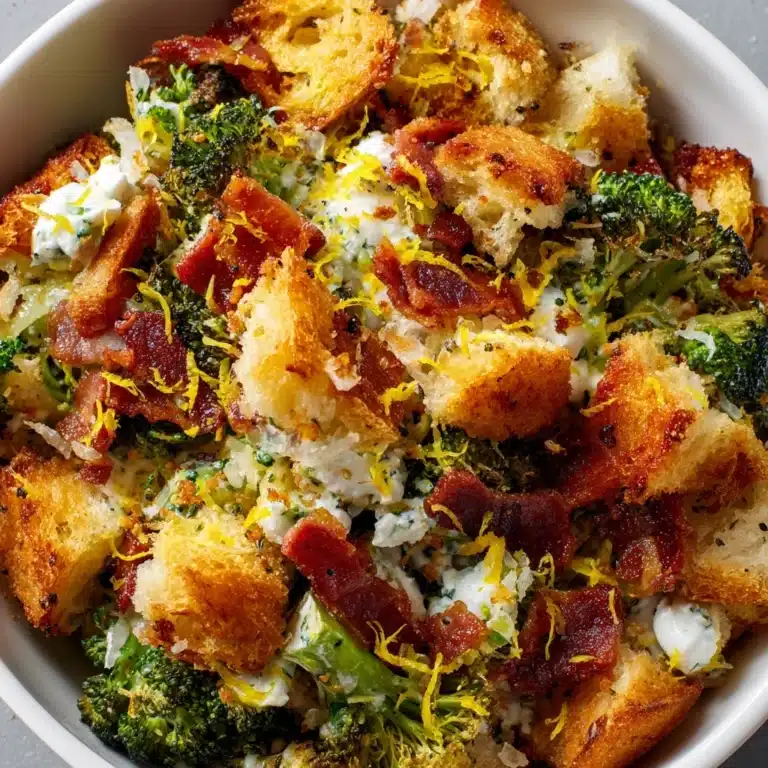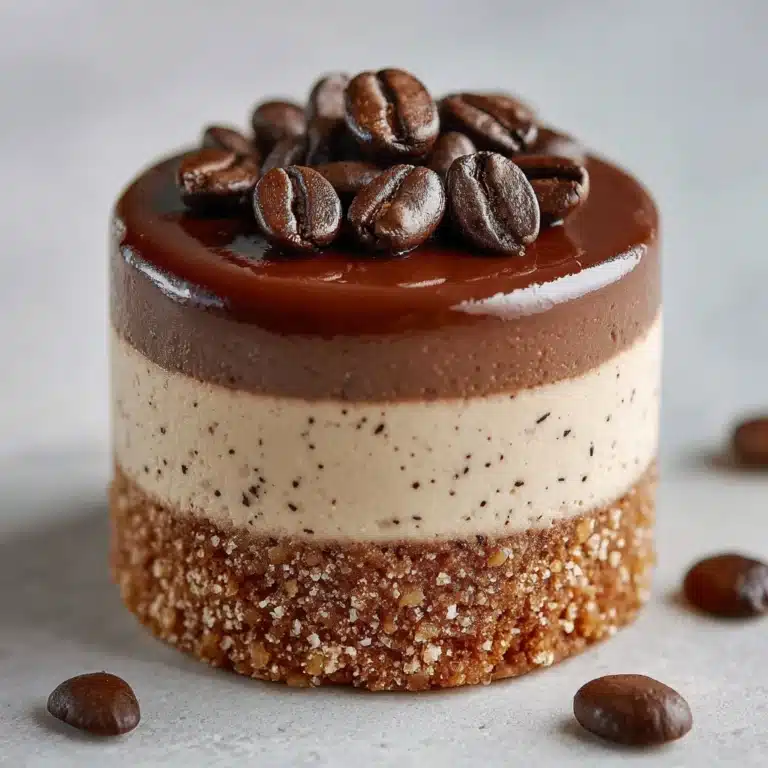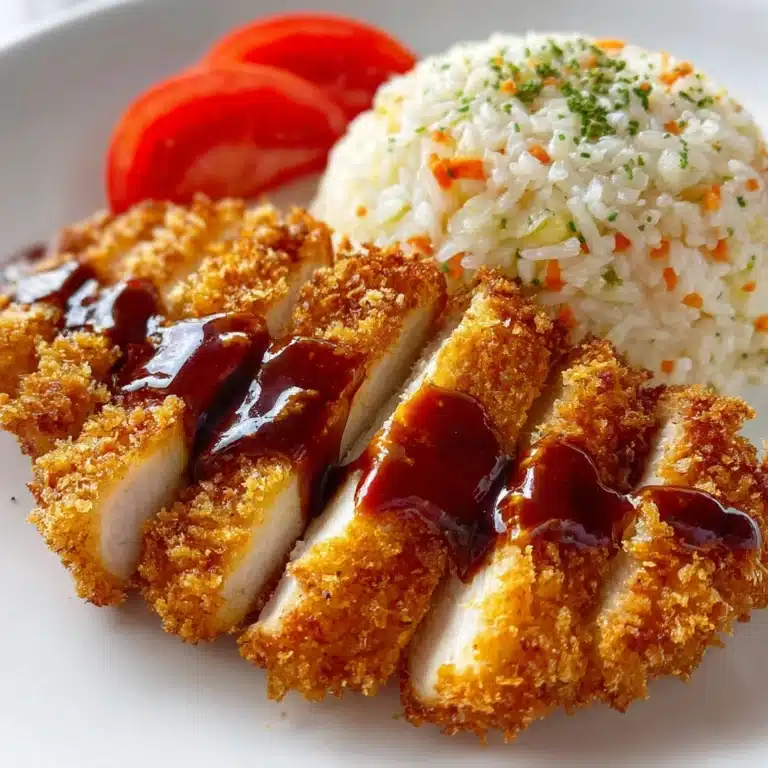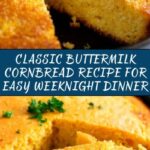If you have a soft spot for comforting, golden, and slightly sweet cornbread that reminds you of cozy family gatherings, then you are in for a treat with Grandmother’s Buttermilk Cornbread Recipe. This classic staple shines with its tender crumb, buttery richness, and that perfect hint of tang from the buttermilk, making it an absolute must-have on your table. The beauty of this recipe is in how it captures the simple joy of homemade bread, passed down through generations, promising a warm slice of nostalgia in every bite.
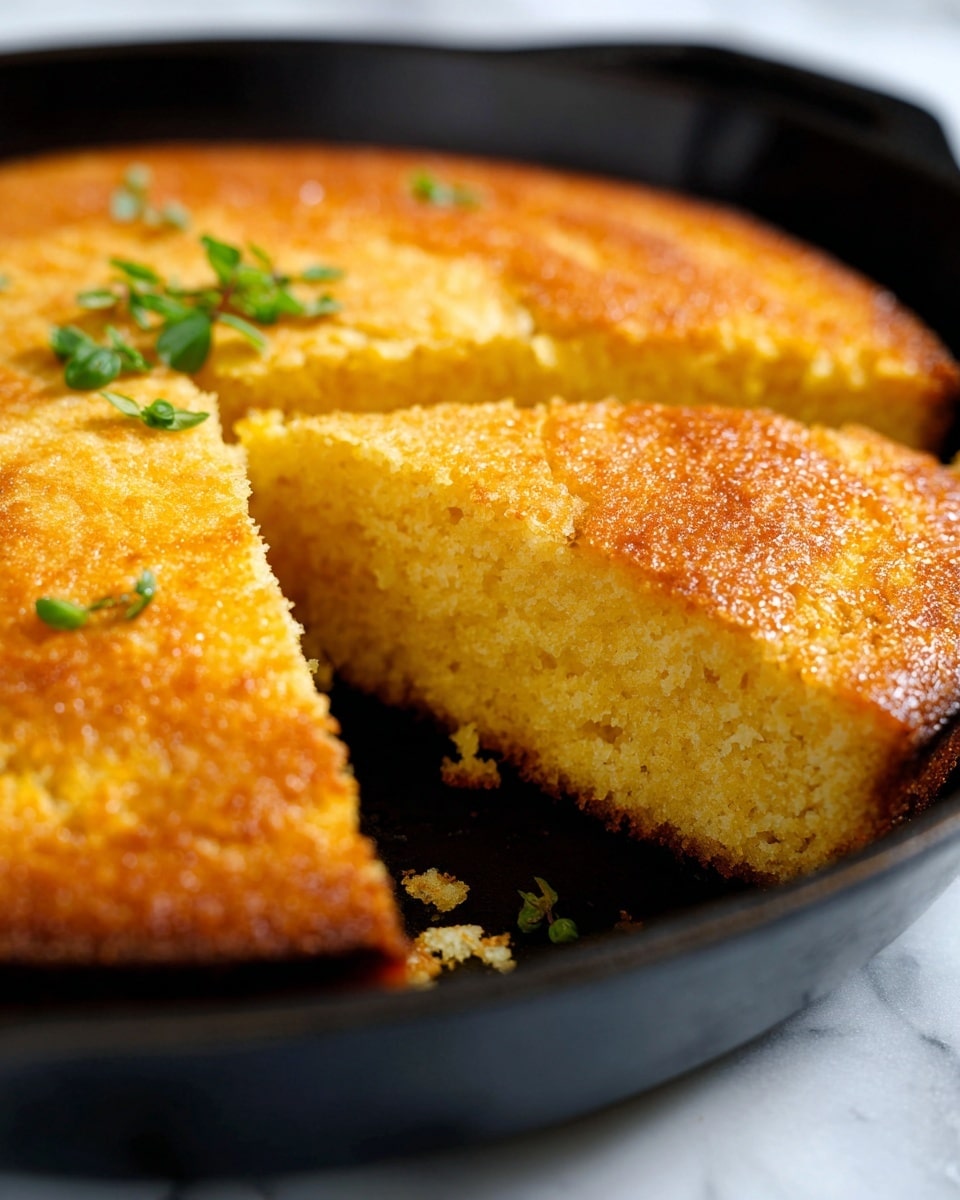
Ingredients You’ll Need
To create the magic of Grandmother’s Buttermilk Cornbread Recipe, you only need a handful of staple ingredients. Each one plays a vital role, whether it’s lending moisture, flavor, texture, or that irresistible golden hue that makes cornbread so inviting.
- 1 cup yellow cornmeal: Provides the signature corn flavor and a slightly grainy texture that’s fundamental to cornbread.
- ¾ cup all-purpose flour: Balances the cornmeal for a tender crumb that holds together beautifully.
- 1 tablespoon sugar: Adds a hint of sweetness without overpowering the dish.
- 1 ½ teaspoons baking powder: Helps the cornbread rise to a light and fluffy texture.
- ½ teaspoon baking soda: Works alongside buttermilk to give the bread a tender lift.
- ¼ teaspoon kosher salt: Enhances all the other flavors subtly and perfectly.
- 6 tablespoons unsalted butter: Brings rich, creamy depth and keeps the bread moist.
- 1 ½ cups buttermilk: Adds tanginess and reacts with leavening agents to achieve the ideal crumb.
- 2 large eggs: Bind the ingredients together and contribute to a light structure.
How to Make Grandmother’s Buttermilk Cornbread Recipe
Step 1: Preheat and Prepare Your Baking Dish
Start by heating your oven up to 425ºF. If you don’t have a trusty cast iron skillet—though I highly recommend using one for the best crust—lightly grease an 8-inch baking dish. This step ensures the cornbread won’t stick and that it cooks evenly with a golden crust.
Step 2: Mix the Dry Ingredients
Gather a large bowl and whisk together your yellow cornmeal, all-purpose flour, sugar, baking powder, baking soda, and kosher salt. Combining these dry ingredients first makes sure every bit of leavening agent gets evenly distributed, setting you up for a perfectly risen cornbread that’s uniformly delicious.
Step 3: Melt the Butter
Slowly melt your butter in your cast iron skillet over low heat, then let it cool slightly. This warm, melted butter imparts an irresistible richness to the batter, and pouring it warm (not hot) keeps those eggs from scrambling when they hit the mix.
Step 4: Whisk the Wet Ingredients
In a separate medium bowl, whisk together the eggs, buttermilk, and cooled melted butter. This trio of wet ingredients is what creates the smooth, slightly tangy base that balances the cornbread’s sweetness and hearty texture.
Step 5: Combine Wet and Dry Mixtures
Pour the wet ingredients into the bowl with your dry mix and stir just until combined. Don’t worry about a few lumps here; overmixing can toughen the cornbread’s texture. The key is gentle folding to maintain tenderness.
Step 6: Pour Batter into Pan
Transfer your batter into your prepared skillet or baking dish. It’s ready for the oven at this point, glowing with the promise of that comforting cornbread aroma soon to fill your kitchen.
Step 7: Bake Until Golden
Pop the pan into your oven and bake for 20 to 25 minutes. A toothpick or tester inserted in the center should come out clean—this tells you that the cornbread is perfectly baked, with a moist interior and a crispy, golden edge.
Step 8: Let it Rest
Remove the cornbread from the oven and allow it to cool slightly for about 5-10 minutes. This resting phase helps it set, making slicing cleaner and ensuring each piece stays intact when served, just like Grandmother intended.
How to Serve Grandmother’s Buttermilk Cornbread Recipe

Garnishes
While the cornbread is delicious all on its own, a pat of melting butter right on a warm slice creates an unbeatable finish. You can also sprinkle a little honey or drizzle some maple syrup for added sweetness. Fresh herbs like thyme or chives make a lovely, savory garnish if you’re leaning into a dinner vibe.
Side Dishes
This cornbread pairs beautifully with a variety of dishes—from smoky barbecued ribs and tangy chili to hearty stews and fresh garden salads. Its versatile texture and flavor act as the perfect sidekick, soaking up sauces or providing a satisfying bite alongside bold, flavorful main courses.
Creative Ways to Present
Switch up the presentation by cutting your cornbread into squares, triangles, or even mini bite-sized pieces for snacking. For a special touch, top slices with a spoonful of spiced preserves or a dollop of creamy pimento cheese. Serving it warm from the skillet directly at the table adds a rustic charm that everyone will adore.
Make Ahead and Storage
Storing Leftovers
Once cooled, wrap your leftover cornbread tightly in plastic wrap or aluminum foil and store it at room temperature for up to two days. Keeping it wrapped well helps maintain its moisture and soft crumb, so it’s just as delightful when you return to it the next day.
Freezing
You can freeze slices of the cornbread by wrapping each piece individually in plastic wrap and then placing them in a freezer-safe container or zip-top bag. Frozen cornbread lasts for up to three months, making it an excellent option for preparing ahead and enjoying whenever the craving hits.
Reheating
To reheat, unwrap your cornbread slice and toast it lightly in a toaster oven or warm it in a preheated oven at 350ºF for about 10 minutes. Adding a touch of butter before reheating will help revive its moist texture and enhance the buttery flavor you love in Grandmother’s Buttermilk Cornbread Recipe.
FAQs
Can I substitute regular milk for buttermilk in the recipe?
While you can use regular milk mixed with a tablespoon of lemon juice or vinegar as a buttermilk substitute, the original tangy flavor and texture from real buttermilk in the recipe are hard to replicate perfectly. For best results, use buttermilk.
Why is my cornbread crumbly?
Crumbly cornbread can result from using too much cornmeal or not enough liquid. Make sure you measure your ingredients accurately and avoid overbaking, which can make the bread dry. Sticking closely to Grandmother’s Buttermilk Cornbread Recipe helps prevent this issue.
Can I make this recipe gluten-free?
To make a gluten-free version, substitute the all-purpose flour with a gluten-free blend that’s suitable for baking. Keep in mind the texture might vary slightly, but it will still hold the wonderful flavor of the original recipe.
Is the oven temperature important for this cornbread?
Absolutely! Preheating your oven to 425ºF is essential for achieving a nice golden crust while keeping the inside moist and tender. Baking at a lower temperature may result in pale, dense cornbread.
Can I add ingredients like jalapeños or cheese?
Definitely! Adding diced jalapeños or shredded cheese can add exciting savory notes. Fold them gently into the batter before baking to incorporate delicious variations while still honoring Grandmother’s Buttermilk Cornbread Recipe’s essence.
Final Thoughts
Grandmother’s Buttermilk Cornbread Recipe is more than just a side dish; it’s a tradition that brings warmth and joy to any meal. With simple ingredients and straightforward steps, it’s a recipe that welcomes both beginner and seasoned bakers to create something truly special. I encourage you to give it a go—you just might find it becoming your new family favorite, passed along for generations to come.
Print
Grandmother’s Buttermilk Cornbread Recipe
- Total Time: 35 minutes
- Yield: 8 servings 1x
Description
This classic Grandmother’s Buttermilk Cornbread recipe delivers a moist, tender crumb with a slightly sweet and tangy flavor. Baked to golden perfection in a cast iron skillet or baking dish, it’s a comforting Southern staple that’s perfect for any meal.
Ingredients
Dry Ingredients
- 1 cup yellow cornmeal
- ¾ cup all-purpose flour
- 1 tablespoon sugar
- 1 ½ teaspoons baking powder
- ½ teaspoon baking soda
- ¼ teaspoon kosher salt
Wet Ingredients
- 6 tablespoons unsalted butter
- 1 ½ cups buttermilk
- 2 large eggs
Instructions
- Preheat Oven: Preheat your oven to 425ºF (218ºC). If not using a cast iron skillet, lightly grease an 8-inch baking dish to prevent sticking.
- Mix Dry Ingredients: In a large bowl, whisk together cornmeal, all-purpose flour, sugar, baking powder, baking soda, and kosher salt until well combined. Set this mixture aside.
- Melt Butter: Melt the unsalted butter in a cast iron skillet over low heat. Once melted, allow it to cool slightly to prevent cooking the eggs in the next step.
- Combine Wet Ingredients: In a medium bowl, whisk the eggs, buttermilk, and the cooled melted butter until thoroughly blended.
- Mix Wet and Dry Ingredients: Pour the wet ingredient mixture into the bowl with the dry ingredients. Stir gently until just combined; a few lumps are okay and will keep the cornbread tender.
- Prepare to Bake: Pour the batter into the warm cast iron skillet or the prepared baking dish, spreading it evenly.
- Bake: Place in the preheated oven and bake for 20 to 25 minutes, or until a toothpick or cake tester inserted into the center comes out clean.
- Cool and Serve: Let the cornbread cool and rest for 5 to 10 minutes before slicing and serving to allow it to set properly and enhance its texture.
Notes
- Using a cast iron skillet helps develop a crispy crust and adds flavor, but a greased baking dish works well too.
- Do not overmix the batter to keep the cornbread tender and light.
- Allowing the butter to cool before mixing prevents the eggs from scrambling.
- Serve warm with butter, honey, or your favorite spread for best flavor.
- Store leftovers in an airtight container at room temperature for up to 2 days or refrigerate for up to 5 days.
- Prep Time: 10 minutes
- Cook Time: 25 minutes
- Category: Bread
- Method: Baking
- Cuisine: Southern American
